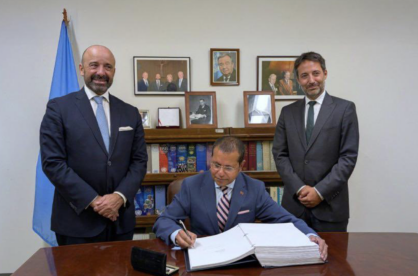COVID-19 on the Global Front
Faced with the coronavirus' current resilience, we may well need to learn to live with it.

Faced with the coronavirus' current resilience, we may well need to learn to live with it.

When the world first heard of the novel coronavirus breaking out in Wuhan, expectations were that it would be like the SARS or MERS virus - create panic for a few months and then wane out or be concentrated in one region or country. Everyone was fervently praying that the 'China virus' did not make it out of China. However, that was short-lived, and given that we live in a highly interconnected world, the virus spread rapidly across the world, bringing powerful countries to their knees.
The world has seen a number of peaks and valleys in its journey with the pandemic. First there was the heartbreak in Italy, with the highest numbers of deaths recorded at that time, then the situation in India, with people gasping for breath while waiting to get a shot of life-saving oxygen. The story does not end there, as the deadly Delta variant, which originated in India, has started to make its rounds across the world.
New Zealand, which had not reported a case of local transmission since February 2021, announced on 17 August that it was locking down the entire country, after one case of local transmission was detected in the country. It is one of the countries that has shown massive success in controlling the spread of the virus. However, how many countries can actually afford to lock down the whole country, especially after one case is detected?
Cases in the United States have also ticked up recently, with more than 130,000 cases reported on 16 August. This increase, due to the Delta variant, after massive vaccine rollouts and controlling the number of new cases since February, makes one think that this is never going to really end.
In our neighbourhood, Sri Lanka on 18 August announced a lockdown of sorts, with new cases numbering more than 3,500 for days and increasing numbers of COVID deaths. The government is adamant and has insisted that a lockdown will not be announced, although it has now said that only one person from each household will be allowed to venture outside, except for work and to seek healthcare. Parks and gyms and malls and swimming pools have been closed, and shops and other facilities are allowed to remain open with limited capacity and in adherence to strict health regulations – so in effect a lockdown without really calling it a lockdown. India and Bangladesh, however, appear to be doing relatively well, after massive waves in recent months.
In the case of the Maldives, after the huge wave in February of this year, cases have been controlled, despite an ease in restrictions for the Eid and school holidays. However, with schools re-opened across the country, and with reports of an increasing numbers of the so-called 'quarantine destination' tourists, and re-opening borders to South Asian tourists, , the situation may well change drastically in the days to come. We cannot afford to let our guard down.
It appears that there is no end to this pandemic. Just when the public relaxes after restrictive lockdowns and keeping to guidelines, it rears its ugly head again and again. Vaccinations are touted to be the answer. This remains to be seen still, with some countries calling for third or booster shots. It may well be that the world will need to learn to live with the virus – but we need to first get numbers under control.



